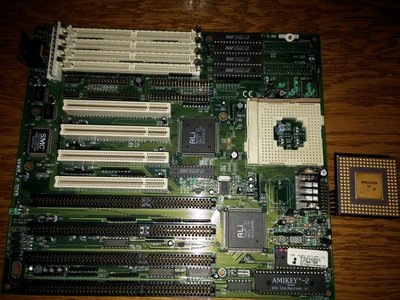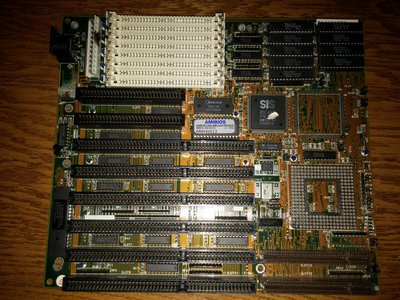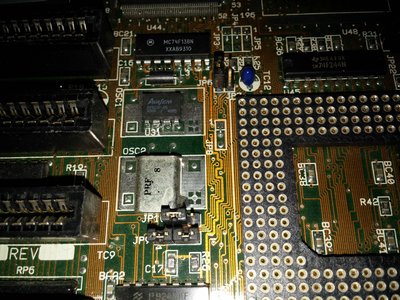First post, by Ozzuneoj
- Rank
- l33t
I'm not familiar at all with motherboards and CPUs from this era. These are the first boards from this era I have had in my possession. These boards need a couple repairs, but if I knew more about them it'd probably help.
What kind of CPU is that? How can I tell which boards it will work in and where it goes in the socket?
Does the cache on these boards look legit?
Also, the VLB board's crystal has partially lost its markings... I just see an "8" toward the end. What speed 486DX is this board likely meant for?
The CPU came in the green board with the ZIF socket, but I don't think it was installed in the correct orientation when I got it. Stupid me, I didn't realize this until after I tried to power it on. The little (VRM?) chip near the socket, with a heatsink, smelled "hot" but didn't smoke. Dumb move on my part, but I had no idea that the chip wasn't installed correctly, or that it was even possible to put them in wrong on a Socket 3 board. I don't want to mess with it any more until I know more about them. Is something likely to be dead because of this? CPU, VRM, etc...?
Any ideas as to make\model of these boards? I found a schematic for an old 386 board I got with these, and that has helped immensely. I can't figure out what brand these are though, so I haven't found anything about them online.
Also, I removed the NiCd batteries from them. I plan to purchase a bunch of 3xAAA battery packs and use low self discharge NiMH batteries for them, as those are easy to use and should last a very very long time. Is this a good idea? I'd use a button cell, but I'm not familiar with the changes that need to be done to prevent them from being charged (ruined) by the board.
Any help is much appreciated! I'm itching to test out some VLB cards and to set up a few systems to fill the huge gap between my IBM 5150 and the Socket 7 systems I have around.
EDIT: Just realized my flash washed out the markings between the ISA slots. It says in there: ASY 01-00232-___REV___ . All of the white spaces were left blank, even the S/N:____ space.
EDIT2: The burn mark on the AT power connector is from a nearby blown tantalum, and that cap will be replaced. Damage seems minimal.
Now for some blitting from the back buffer.


